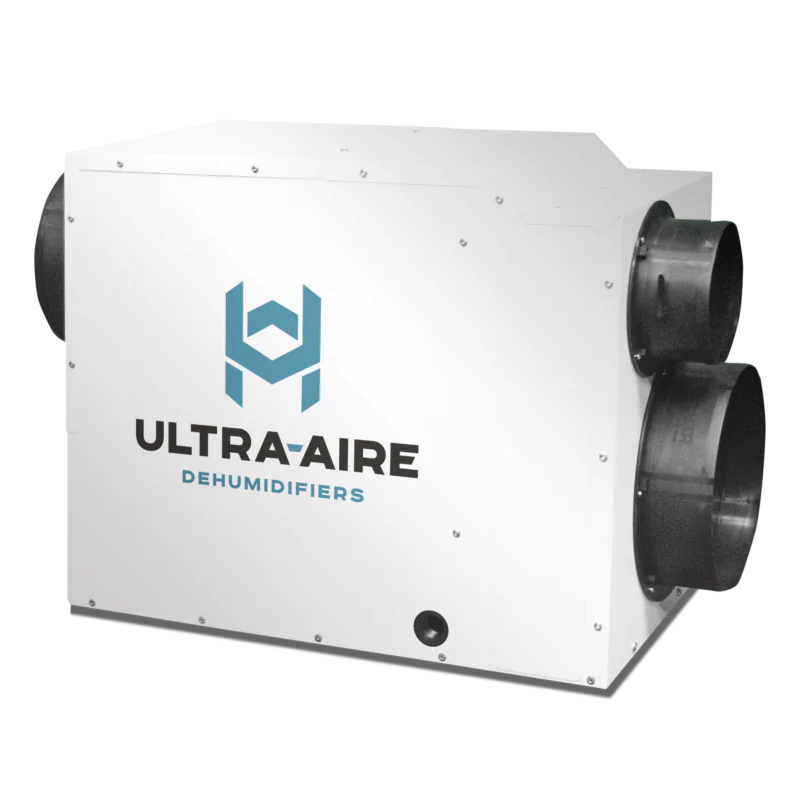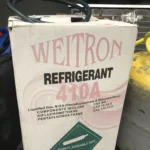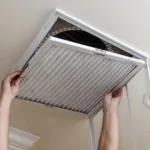Here’s an unsurprising fact: humidity complaints are common in Florida. Humidity causes discomfort in homes all over the country. Still, the Southeast is notorious for humidity problems. Even then, most of those states have nothing on Florida.
Several things can cause indoor humidity. Bathrooms and kitchens have excess moisture due to running water & cooking, but we can control it with exhaust fans. Duct leaks, high evaporator coil temperatures, and cracks in your home may also raise the humidity. Luckily, you or an HVAC tech can fix most of these.
If you’ve done everything and still feel uncomfortable in your home, you may consider installing a whole-home dehumidifier. Kalos’s Jesse Claerbout has agreed to share some of his knowledge to help you decide if it’s the right choice for you.
Table of Contents
How do dehumidifiers bring in fresh air?
Whole-home dehumidifiers work with your A/C system. They usually pull air from your home through a grille in the ceiling. Air then enters the return from the grille and goes through a filter. This filter catches allergens and contaminants within your home before removing moisture.
Many dehumidifiers have a fresh air inlet. Those inlets draw in air from outside, which goes through a duct that runs separately from the return. The fresh air also runs through a motorized damper. Like the in-home air, the fresh air also passes through the filter before it reaches the dehumidifier. Fresh air intake helps control odors.
The dehumidifier has a long coil. Excess moisture is removed from the air as it moves along the coil. From there, the fresh and indoor air goes to your A/C unit to circulate through your home.
Installing whole-home dehumidifiers
Installing a dehumidifier is quite a labor-intensive process. Homeowners don’t need to worry about it, but there are many things that a technician must consider. Jesse Claerbout has a list of questions that he asks whenever he approaches a dehumidifier installation project:
Where will the dehumidifier be located?
It’s easier to answer this question when you’re installing dehumidifiers on two-story homes. Claerbout usually recommends installing dehumidifiers on the second floor if possible. Water vapor rises, so dehumidifiers are usually more useful at higher points in the home.
Where will we pull the return air from?
There are a few different ways we can pull the return air. If possible, we like to use dedicated air returns to the dehumidifier. Dedicated returns pull air directly from the environment and run it through the dehumidifier. We may also take return air from the HVAC unit itself, but we will need to either run the fan or put in a check damper.
How are we distributing the supply?
The answer to this question will depend on the unit. Dehumidifiers attached to mini-split systems have their air distributed independently throughout the home. Otherwise, the supply can go back to the central A/C unit.
Do we need a backdraft damper?
A backdraft damper prevents damp or contaminated air from coming back in or from other forms of backdraft mixing. These dampers are common in bathroom exhaust fans, but they also help the dehumidifier do its job.
Where will it drain?
Whole-home dehumidifiers drain condensate into a tube, which connects to an independent gravity drain or a pump. Depending on the force of gravity and the condensate tube’s location, you may need to install extra pumps to push the condensate through the drainage hose.
Do we have easy access to replace the dehumidifier’s filter?
Like A/C units, you have to replace filters in dehumidifiers from time to time. You’ll have to change these every few months or so, perhaps even more often if you have pets or plants. (Pollen and dander are contaminants that can reduce your air quality.)
Filters should not be difficult or dangerous to replace. During installation, we want to make sure the filter is in a place that’s safe and easy to reach.
Do we have to run a new electrical system?
We can adapt many dehumidifiers to a home’s current electrical system. Sometimes, that’s not the case, and we’ll have to create a new one. The existing electrical system (or lack of a suitable one) will affect the installation time and cost.
Of course, these are things the techs need to consider. Homeowners don’t need to answer these questions. Still, these questions and answers may help them understand what dehumidifiers are and how they work.
How do you duct in a dehumidifier?
You can use traditional A/C ducts to duct in a humidifier.
Flex ducts are common in Florida. Most of the time, these will do just fine for routing the air. One duct runs from the grille to the return, and another runs from the dehumidifier to the A/C unit.
As with other HVAC systems, dehumidifiers use a drain line. You can either add the dehumidifier’s condensate drain to an existing drain or create a new drain. You can add them to drains of A/C units or domestic water heaters.
To watch a quick installation with flex ducts, we recommend watching this short clip of Ask This Old House.
What are some common misconceptions about how dehumidifiers work?
Some people believe that dehumidifiers reduce energy usage in homes. After all, they do some of the work that the A/C unit would otherwise do, so they must save some money on the electric bill. Unfortunately, dehumidifiers do NOT reduce the overall energy usage in your home.
Dehumidifiers are a comfort investment, not a financial one. A dehumidifier has installation and running costs, like any other unit. The amount of money it might save on your A/C unit’s electricity is relatively negligible.
Many homeowners are willing to pay the price for comfort, though. A vast majority of them have been satisfied with the dehumidifiers installed by Kalos.
The verdict:
Whole-home dehumidifiers may be an investment, but they are well worth the comfort they provide in Florida’s humid climate.
Installation is a labor-intensive process, but it isn’t a serious concern for homeowners. Dehumidifiers can easily work with your A/C system to keep your air clean and comfortable. We guarantee that you’ll feel a difference on muggy days.






